North Carolina War Between the States Sesquicentennial
The Northern Slave Trade and Slavery
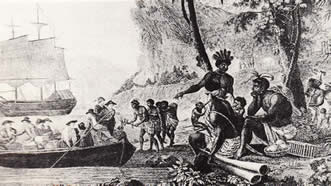
Bill Arp's Observation Circa 1903
"It is sad and mortifying that our young and middle-aged men and our graduates from Southern
colleges know so little of our antebellum history. The Northern people are equally ignorant of the origin
of slavery and the real causes that precipitated the civil war. Most of them have a vague idea that
slavery was born and just grew up in the South---came up out of the ground like the
seventeen-year-old locusts---and was our sin and our curse.
Not one in ten thousand will believe that the South never imported a slave from Africa, but got all
we had by purchase from our Northern brethren. I would wager a thousand dollars against ten that
not a man under fifty nor a schoolboy who lives North of the line knows or believes that General Grant,
their great military hero and idol, was a slaveholder and lived off the hire and their services
while he was fighting us about ours.
Lincoln’s proclamation of freedom came in 1863, but General Grant paid no attention to it.
He continued to use them as slaves until January, 1865. (See his biography by General James
Grant Wilson in Appleton’s Encyclopedia.)
General Grant owned these slaves in St. Louis, Missouri, where he lived.
How many of this generation, North or South know, or will believe, that as late as November, 1861,
Nathaniel Gordon, master of a New England slave ship called the Erie, was convicted in New York City
of carrying on the slave trade? (See Appleton.)
Just think of it!
In 1861 our Northern brethren made war upon us because we enslaved the Negroes we had bought
from them; but at the same time they kept on bringing more from Africa and begging us to buy them.
How many know that England, our mother country, never emancipated her slaves until 1843, when
twelve millions were set free in the East Indies and one hundred millions of dollars
were paid to their owners by act of Parliament?
It is only within the last half-century that the importation of slaves from Africa has generally ceased.
Up to that time every civilized country bought them and enslaved them. English statesmen and
clergymen said it was better to bring them away than to have them continue in their barbarism
and cannibalism. I believe it was God’s providence that they should be brought away
and placed in slavery, but the way it was done was inhuman and brutal.
(“From The Uncivil War To Date, 1865 To 1903”, Bill Arp, Hudgins Publishing Company. 1903, pp 351-353)
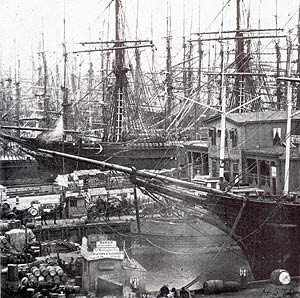
Slavers in New York Harbor
Origins of the New England Slave Trade
“In the library of the State College of Raleigh, N.C., there is a notable book of some
three hundred and fifty pages and forty-nine illustrations – the fifteenth publication of the
Marine Research Society, of Salem, Mass., and published in Vermont –
the title being: “Slave Ships and Slaving.”
The introduction was written by a British Navy officer, and the text is by George F. Dow.
Within ten years after the discovery of America the Spaniards began the transport of Africans to
work in their possessions, and all the maritime nations of Europe followed their example; and during
the next two hundred and fifty years the English transported as many
as all the countries put together.
They began in Queen Elizabeth’s time, kept is up in the next reign, and, in 1662, the Duke of York
undertook to transport to the British Colonies three thousand slaves every year. Ten years later
the King himself became interested and, under contract, England got from Spain the exclusive right
to supply the Spanish colonies; and the King of England and the King of Spain
each received one fourth of the profits.
Between 1680-1688 England had two hundred and forty-nine slave ships; from 1713, for twenty years,
15,000 slaves were annually brought to America. In 1786, England brought over 97,000 slaves.
During eleven years, 1783-93, Liverpool owned eight hundred and seventy-eight vessels in this trade,
and imported many thousands of slavers in the West Indies. They were worth some 15,000,000
pounds of that period; equal to about $150,000,000 now.
While Liverpool was the chief port for this trade, Bristol was a close second.
Then, over here, New England was not slow. Massachusetts started in 1638. However, Rhode Island
became the rival of Liverpool. Ten pages of this volume are devoted to the operations of Rhode Island.
There nearly every one was interested…[and by] 1750, “Rum was the chief manufacture of New England.”
About 15,000 hogsheads of molasses were annually converted into rum in Massachusetts alone.
The number of stills in operation was almost beyond belief [and] in Newport
there were no less than twenty-two.”
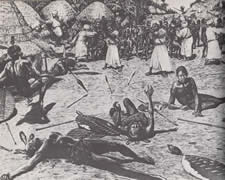
With rum they purchased Negroes in Africa; these were exchanged for molasses in the Caribbean
Islands and South American, and the molasses was brought to the New England stills; and so the
profitable business was carried on in a circle to the extent beyond ordinary imagination!
It was the very basis of New England’s prosperity. At Newport, Bristol and Providence, some of
the most respectable and wealthy merchants were engaged in the trade. Even preachers and
philanthropists were advocates. “One elder, whose ventures in slaving had usually turned out well, always
returned thanks on the Sunday following the arrival of a slaver that the Africans could
enjoy the blessing of a Gospel dispensation.”
The Southern colonies had no ships, nor any molasses. They were not in the trade. However, the
British Slaving Company, in which the King of England was partner and in duty bound to supply
the needs of the colonies as particularly required by Good Queen Anne. The Colonies were forbidden
to manufacture, and their products were required to be shipped to England, where they were
exchanged for British goods. So the more slaves making products,
the more goods the Colonies bought in England.
At length Virginia forbade any more importation [of slaves] but the King annulled that Virginia law.
In Jefferson’s draught of the Declaration of Independence he denounced the King most severely
for annulling these prohibitions. However, in 1774, importations [of slaves] were forbidden by the
people of North and South Carolina, and there were no importations until 1803,
when South Carolina opened her ports for four years.
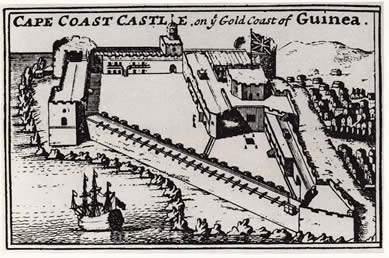
Great Britain abolished the [slave] trade in 1807, just as the Congress of the United States did.
After a few years, other countries followed our example: Spain in 1820, Portugal in 1830; but the
trade between Portuguese Africa and Brazil did not cease until Brazil, in 1888, put a stop to it.
The Southern Colonies had no ships engaged in this trade, nor any molasses or rum, but, as the matter
worked out, those States were the greatest sufferers in the end. Since 1800, the labor of Africans in the
South have largely supplied the world with cotton.
That this volume was prepared by the Marine Research Society of Salem, Mass., speaks well
for New England, and it should be in every library in the South.”
(The Slave Trade, Captain S.A. Ashe, Confederate Veteran, December, 1930, page 457)
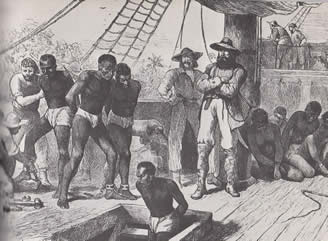
The Cornerstone of New England Prosperity
"Soon after its settlement, Bristol [Rhode Island] people began to engage in commerce
with the West Indies and the Spanish Main. The first recorded shipment [November 6, 1686]
consisting of a number of horses, was consigned to the "Bristol Merchant" bound for Surinam,
British Guiana. Slave trade was introduced in Rhode Island about 1700, and Bristol was
not slow in joining Newport and Providence in this highly profitable industry.
It has been estimated that over a fifth of the total number of slaves crossed the Atlantic to
British America in Rhode Island vessels, and that of this fifth Bristol slavers carried the largest
share. Shipping steadily increased until, before the Revolution, at least fifty vessels were
owned and manned at this port. Horses, sheep, pickled fish, onions, carrots, etc., made up
the cargo on the outward voyage, and coffee, molasses, sugar, rum and tropical fruits
were imported. The outbreak of the Revolution struck hard at this prosperity
of this flourishing commercial town.
After the war, the people of Bristol rebuilt the town, and commerce soon revived, especially the
slave trade with Africa and molasses and rum trade with Cuba. The first cargo, chiefly furs imported
from China was landed at Bristol in May, 1804 by the "Juno," a full-rigged ship
of 250 tons captained by James DeWolfe.
[A] thorn in Britain's side during the War of 1812 was James Wolfe, of Bristol, who as a
boy ran away from his father's farm to go privateering and who later accumulated a fortune in the slave trade."
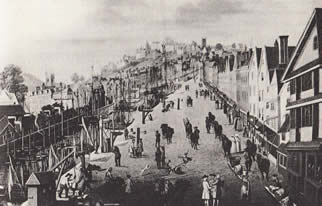
"[The Molasses Act [of 1733] placing heavy duties on the importation of molasses from which
Rhode Islanders made rum convinced the colonists that the English policy toward America . . .
was a hindrance to local prosperity. Distilleries [were] manufacturing rum that
was shipped to Africa and bartered for slaves."
(Rhode Island, A Guide To The Smallest State. WPA Writers Project, Houghton Mifflin, 1937)
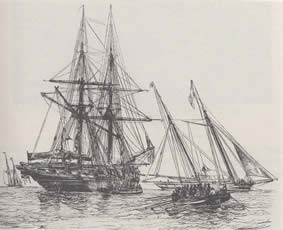
The “Sukey” Sails
“She lay alongside Captain Jim DeWolfe’s wharf that day in 1802, a smart, trim topsail schooner,
nearly ready for sea. On her stern was lettered her name, “Sukey,” and below it, Bristol, Rhode Island.
As usual, the Bristol waterfront buzzed with feverish activity that day, especially on Captain Jim’s wharf.
Heavy ox carts laden with last minute cargo lumbered slowly across the cobblestones of Thames Street
that edged the wharf, and then onto it.
Captain Jim and some of his brothers owned the carts and oxen, the distillery on Thames Street
from which most of the Sukey’s outward cargo had come, and the countinghouse that was the
headquarters for their business. In the West Indies, or Sugar Islands as they were often called
in those days, the deWolfes owned plantations to provide the cargo the Sukey would bring back
to Bristol on the homeward part of her long voyage. And they owned the Sukey and other ships that
sailed in the evil trade in which they were engaged.
The Sukey…had no trouble getting her clearance papers after an inspection by the Bristol surveyor.
[Although the Rhode Island State Assembly had forbid the slave trade], Her trade and that of many another
Bristol vessel brought too much prosperity to too many people. There were the Bristol sailmakers and
carpenters, the caulkers who sealed the ships’ joints with oakum and tar, the ship chandlers who
sold provisions and an endless variety of wares needed aboard a vessel, and the owners and workers
of the ropes that made cordage---the great number of ropes used in holding, hoisting, lowering and
controlling the sails of a ship. And there were many people who depended upon
the Bristol ship owners for profit and wages.
If a vessel (returning) from the Sugar Islands was discharging her cargo, there would be [boys who]
most Bristol wharf owners would let have their taste of the sweet molasses. But on deWolfe’s wharf
that day, when you came close enough to the schooner, there was another smell---a smell that seemed
to make your very insides curl up. It was a smell so vile and horrible that you wondered how the
Sukey’s crew could possibly stand it.
“You can smell a slaver five miles downwind,” they say on the Guinea Coast. And the Sukey was a slaver.
Probably a fair-sized crowd of the crew’s family and friends were gathered on deWolfe’s wharf
as the Sukey sheered gently away…people on the wharf cried “huzza!” and waved their hats.
The Sukey was off on her voyage. In West Africa, she would work her way down the Guinea Coast,
probably finding it necessary to stop at port after port as she exchanged her trade goods and
precious rum for even more precious black slaves, and perhaps also for
gold dust, ivory, ebony and other African products.
At last she would head west, crossing the Atlantic over the infamous Middle Passage to the
West Indies. In the islands the slaves would be landed and sold. Then Captain Almy would fill the
Sukey chockablock with hogsheads of molasses to be distilled into more rum at Bristol.
This was the evil, cruel business known as the Triangular, or Three-Cornered Trade. It was
the cornerstone of much of New England’s prosperity in the 18th and 19th centuries. It made many
men rich, but it was part of what was to bring disgrace upon white [British and New England] men,
misery and oppression upon black people, and untold trouble upon the world.”
(Rum, Slaves and Molasses, Clifford L. Alderman, Crowell-Collier Press, 1972, pp. 1-12)
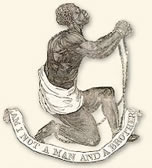
In the post-Revolution era, African slavery was waning as cotton production was a laborious
task and not worth cultivating on a large scale until Eli Whitney of Massachusetts revolutionized
the industry in 1793. Thereafter, New England mills could not live without raw slave-produced cotton,
Manhattan lenders ensured Southern plantation owners that money was available for plantation expansion,
and New England slavers continued to import the labor supply.
New York’s Notorious Slave Ships
“In the decade 1850-1860 Great Britain maintained consulates in six Southern ports: Norfolk, --
changed to Richmond in 1856 – Charleston, Savannah, Mobile, New Orleans and Galveston.
[Consul G.P.R.] James [in Norfolk and Richmond] . . . considered that Virginians were very kind to their
slaves and that slavery was an injury to masters rather than Negroes. One of the proprietors of the
Richmond “slave warehouse” was, wrote his son Charles later, an “unmistakable Yankee,” said to be
very humane to his charges, “but the business was regarded as infamous. I heard a respectable
man denounced for accepting his hospitality.”
At Niagara Falls, James saw a runaway Negro belonging to one of his Norfolk neighbors; he had
found it difficult to make a living and was cold and he begged the consul to ask his owner to take him back.
[Consul] Henry G. Kuper of Baltimore gave assurance that the slave trade was being extensively carried
on by many American citizens, especially in New York . . . with the connivance of Spanish authorities
in Cuba where most of the cargoes were conveyed . . . Consul Edward W. Mark wrote from Baltimore
that at any moment twenty vessels might be found under construction at that port, admirably adapted for
the slave trade. Some were built expressly for the trade by “respectable houses,” which would not enter
the trade themselves but merely executed the orders they received.
Mark believed, however, that in Baltimore little countenance was given to the trade. It was carried
on rather “from New York and the eastern parts of the Union . . . and generally by New England and foreign firms.”
[In 1858 Consul] Molyneaux of Savannah told the story of a Charleston mercantile house . . . which
proposed to send the ship Richard Cobden . . . on a [suspicious] voyage to Africa to bring “free emigrants”
to a United States port. The collector of the port appealed to United States Secretary of the Treasury
Howell Cobb who pronounced the proposal illegal.
About the same time the Lydia Gibbs, a vessel of one-hundred and fourteen tons of Northern build,
sailed from Charleston under one Watson, a Scotchman naturalized in the United States. He took it to
Havana where it was sold to unknown persons for $12,000. Watson was to receive $6,000 more if he
escaped detection, and in addition a certain percentage of the slaves he should succeed in landing in Cuba.
[In July 1858 Charleston Consul Robert Bunch] wrote that the brig Frances Ellen had cleared from
Charleston for Africa, supposedly to engage in the slave trade; that the firm of Ponjand and Lalas,
two Spaniards, which sent it out, was believed to be regularly engaged in this traffic [and] intended
to land five or six cargoes in Texas . . .
In December, 1859, the South Carolina legislature received from the New York assembly a set of
resolutions passed by the latter body, condemning the slave trade and urging the Southern States
not to connive at or encourage the odious traffic. South Carolina returned the resolutions to the senders
without comment and Bunch, though agreeing with the New York sentiments, dryly noted that the
action was not “happily received,” “as it is notorious that, during the present year, at least ten slavers
have been fitted out in New York for one in the entire South.”
(The South in the 1850’s as Seen by British Consuls, Laura A. White, The Journal of Southern History,
February 1935, excerpts, pp. 29, 31, 36-41)
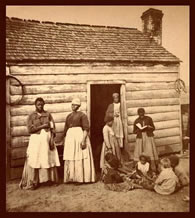
Fleeing to Negro-Hate Up North
“Samuel R. Ward…was born on a plantation on the eastern shore of Maryland to
slave parents in 1817. The family escaped to Greenwich, New Jersey in 1820, and removed
six years later to New York City. In New York Ward’s father was a house painter, whose
experience in slavery seems to have induced in the son a resonance to abolitionism.
Poverty compelled Ward to work, “but inclination led [him] to study.” He was placed in a public
school and taught “by Mr. Adams, a Quaker gentleman.” Thus in spite of poverty, Ward was able to
make some progress in learning. Poverty, however, was not the only obstacle for a black lad in New York City.
There was also “the ever-present, ever-crushing Negro-hate.”
[He wrote:] “As a servant it denied me a seat with my white fellow servants…the idea of employing
a white clerk was preposterous..So if I sought a trade, white apprentices would leave, if I were
admitted. I found all the Negro-hating usages and sentiment of general society [in New York]
encouraged and embodied in the Negro [church] pew…I know of more than one colored person
driven to a total denial of all religion, by the religious barbarism of white New Yorkers…”
Henry Highland Garnet was born into slavery in New Market, Maryland…in 1815. In 1824, his parents,
after receiving permission to leave the plantation to attend a funeral, escaped with him to Pennsylvania
and moved to New York City in 1826. Between 1826 and 1828, Garnet was educated at African Free Schools of the city.
In 1855 Garnet went to Canaan Academy, New Hampshire. Henry did not escape “Negro-hate”
in this rural community. A mob using ninety-five oxen and working two days pulled down the building which
housed the academy out of line of the other buildings and burned it to the ground. “The mob further
attacked Garnet in the home of Mr. Kimball with whom Garnet was boarding.”
Charles Ray was born on 25 December 1807 in Falmouth, Massachusetts, where his father was
a mail carrier. Charles was educated at schools and academies of his native town. Afterwards
he worked for five years on his grandfather’s farm in Westerly, Rhode Island.
In the early 1830s, Ray, financed by the abolitionists, studied at Wesleyan Seminary in
Wilbraham, Massachusetts, and Wesleyan University in Middletown, Connecticut. [White]
students raised objections to his presence at the university, calling it “inexpedient.”
Charles was forced to leave."
(The New York Abolitionists, A Case Study of Radical Politics, Gerald Sorin, Greenwood Publishing, 1971, pp. 85-93)
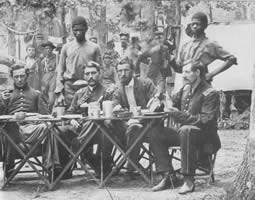
New Masters from the North
“Sunday, May 11 -- [Captain] Hazard Stevens cam over with despatches from General [David] Hunter
ordering all the agents to send him in the morning all able-bodied black men between the ages of 18 and 45,
capable of bearing arms, on the plantations. There was no explanation whatsoever for the reasons for the
demand, or what was to be done with them, and nothing but our confidence in General Hunter’s friendliness
to the race gave us a shadow of comfort. But that would avail little to the Negroes, who would lose the
confidence they are beginning to feel in [Northern] white men.
Companies of soldiers were to be sent from Beaufort in the night and distributed to the different
plantations to prevent the Negroes from taking to the woods . . .
Mr. G. [spoke to freedman Joe] telling him that General Hunter had work at Hilton Head for a great
many black men . . . [and the orders] must be obeyed and he must march; he had to go at once to his house
for his cap, say good-bye to his wife and come to us to leave his will, for he said he never expected to come back.
We made as light of the whole thing as we could, but did not dare say anything . . . which might make
[the Negroes] feel afterward as if we had deceived them, for the thing they dread is being made to fight,
and we knew that there had been men about trying to recruit for Hunter’s pet idea, a regiment of blacks.
If we can have blacks to garrison the forts and save our soldiers through the hot weather, every one will
be thankful. But I don’t believe you could make soldiers of these men at all – they are afraid, and they know it.
Letter from W.C.C. May 27 – plantation Negroes, at least – will never make soldiers in one generation.
Five white men could put a regiment to flight; but they may be very useful in preventing sickness and
death among our troops by relieving them of part of their work . . . .”
(Letters From Port Royal, Elizabeth Ware Pearson, editor, W.B. Clarke Company, 1906, excerpts, pp. 38-43)
Sale of Slave Tom Forever in New Jersey
“Know all men by these presents, that I, Enoch Williams, of the township of Newark, in the
County of Essex, and State of New Jersey, for and in consideration of the sum of one hundred
and eighty dollars paid, or secured to be paid by Phineas Crane of the Town, County and State
of the aforesaid, unto the said Enoch Williams, for which payment I have given, granted, bargained
and sold unto the said Phineas Crane, my Negro man named Tom;
[T]o have and to hold the said Negro man unto the said Phineas Crane, for himself, his heirs,
executors, administrators and assigns; and doth warrant, secure, and forever defend the sale
of said Negro man named Tom unto the said Phineas Crane, his heirs and assigns forever.
In witness whereof, I have hereunto set my hand and seal this twenty-ninth day of May, in the year of
our Lord one thousand eight hundred and nine [1809]. Enoch Williams.
Sealed and delivered in the presence of: Elizabeth Crane[and] Polly Williams.”
(History of Montclair Township, State of New Jersey, Illustrated, Henry Whittemore,
Suburban Publishing Company, 1894, page 32)
Copyright 2014, North Carolina War Between the States Sesquicentennial